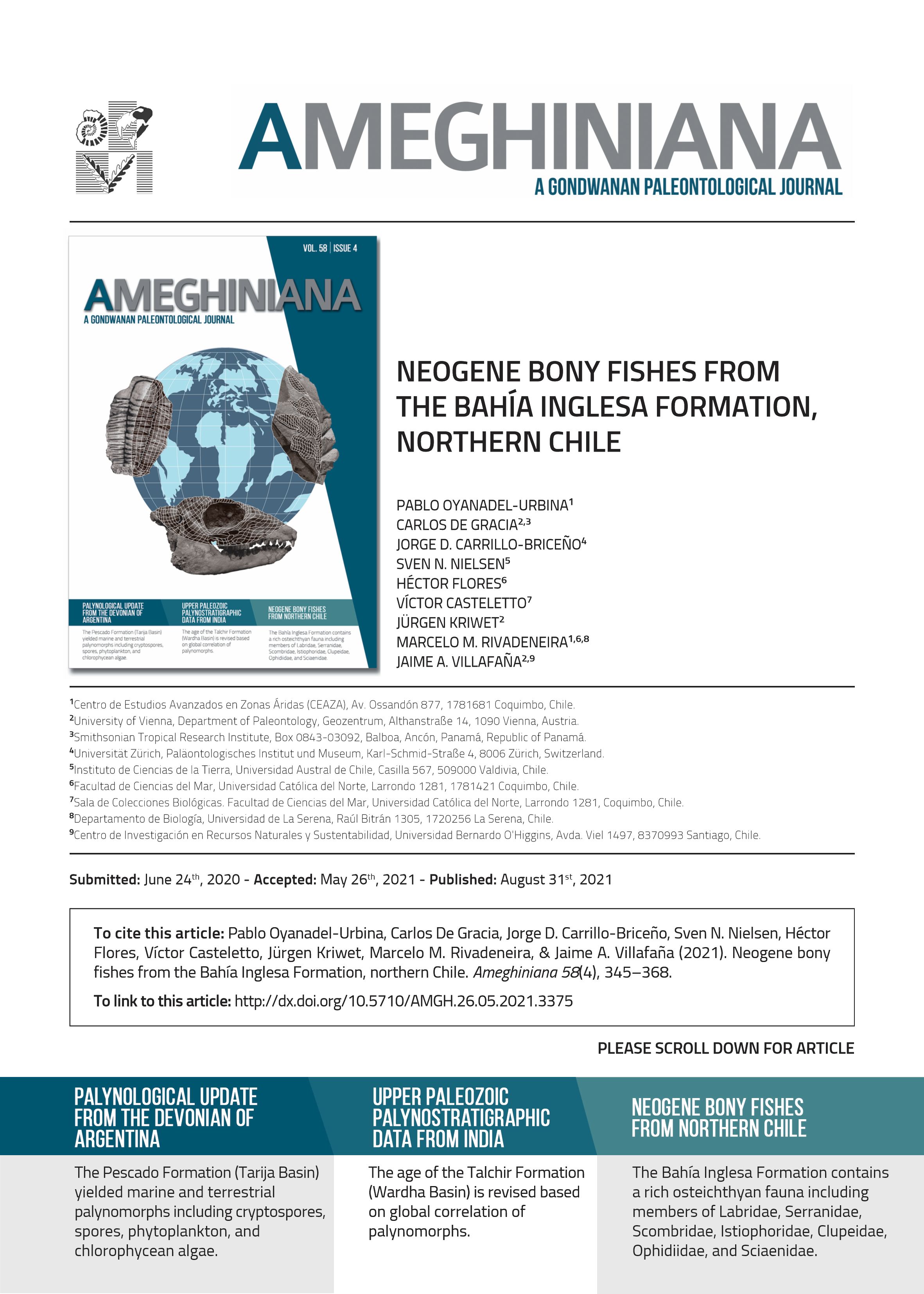NEOGENE BONY FISHES FROM THE BAHÍA INGLESA FORMATION, NORTHERN CHILE
DOI:
https://doi.org/10.5710/AMGH.26.05.2021.3375Keywords:
Atacama Region, Clupeiformes, Eastern Pacific, Paleoenvironments, Perciformes, OphidiiformesAbstract
Despite being one of the richest Neogene deposits of marine fossil vertebrates along the Pacific coast of South America, no detailed study of bony fishes from the Bahía Inglesa Formation has been carried out. Through the revision of historical collections of the Caldera Paleontological Museum, we describe 27 fossil remains of bony fishes. Fossils described here are distributed in 13 taxa. Among these, Sardinops sp. cf. S. sagax (Clupeidae) represents the first fossil record of the genus for Chile, Labrodon sp. (Labridae) and Stelliferinae (Sciaenidae) are the first respective records for the southeast Pacific Ocean, Sarda sp. (Scombridae) represents the first fossil record for South America, Semicossyphus sp. (Labridae) and Anisotremus sp. (Haemulidae) are the first respective records for the Southern Hemisphere. Gymnosarda sp. (Scombridae) is described for the first time for the Neogene. We performed a paleobathymetric analysis of fossil fishes, including elasmobranchs, to understand the paleoenvironment followed by a similarity analysis that compares the faunal composition of the Bahía Inglesa Fm. with other fossil assemblages for the Pacific of South America. Our results show that the fish fauna from the Bahía Inglesa Fm. likely represents a depth range of 98 to 382 m with a mean depth range of 252 m in an uppermost bathyal environment. The assemblage from the Bahía Inglesa Fm. shows low taxonomic similarity levels with other Neogene geological units from the southeast Pacific Ocean. The study represents the first paleoecological and paleobiogeographic analysis of the fossil fish fauna from the Southeast Pacific.

Additional Files
Published
Issue
Section
License
Authors publishing in Ameghiniana have the option of making their article freely available online. Authors opting for the Open Access must pay a fee of $300 (US dollars) to cover article-processing costs and to ensure the article is made open access. Please contact the Production Team after the acceptance of your manuscript if you are interested in making your article Open Access. This option implies by default a license Creative Commons Attribution Non-Commercial-NoDerivs License (CC BY NC ND). If your funding institution requires a different licensing option please communicate this to the Production Team after the acceptance of your manusctipt.










